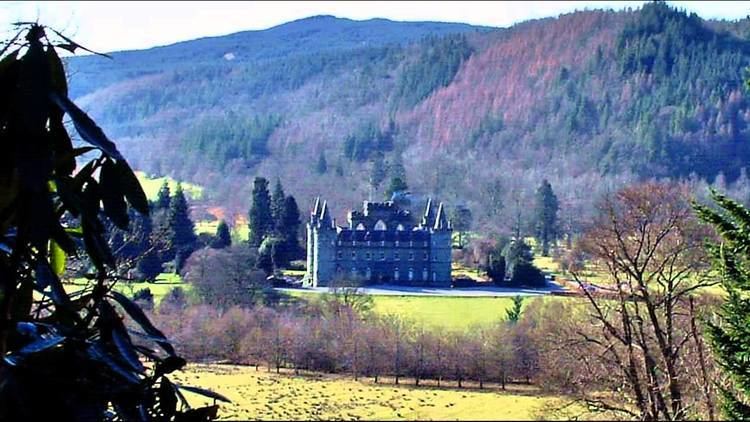Type Sea Loch Frozen No | Surface elevation Sea Level Area 73.81 km² | |
 | ||
Basin countries Scotland, United Kingdom Similar | ||
Loch Fyne; (Scottish Gaelic: Loch Fìne, [l̪ˠɔx fiːnə]), meaning Loch of the Vine or Wine, is a sea loch off the Firth of Clyde and forms part of the coast of the Cowal peninsula. Located on the west coast of Argyll and Bute, Scotland. It extends 65 kilometres (40 mi) inland from the Sound of Bute, making it the longest of the sea lochs. It is connected to the Sound of Jura by the Crinan Canal. Although there is no evidence that grapes have grown there, the title is probably honorific, indicating that the river, "Abhainn Fìne", was a well-respected river.
Contents
- A drive through tarbert situated on the banks of loch fyne argyll scotland
- Crinan Canal
- Fisheries
- World War II
- References
In the north the terrain is mountainous, with the Arrochar Alps, Beinn Bhuidhe, Glen Shira, Glen Fyne, Glen Croe, Arrochar, Tyndrum and Loch Lomond nearby.
It is overlooked by the Tinkers' Heart, an old travelers' monument
Loch Fyne is a popular area for sport diving and fishing. It is also a popular tourist destination with attractions such as Inveraray Castle and the nearby ruins of Castle MacEwen and Old Castle Lachlan.
The village of Portavadie is on the east shore of the loch. A passenger ferry traverses the loch to Tarbert from the slipway at Portavadie.
Dolphins, seals and otters inhabit the loch, and basking sharks can appear in its waters during the summer months. A Ross's gull was present at the loch in early 2007.
A drive through tarbert situated on the banks of loch fyne argyll scotland
Crinan Canal
The Crinan Canal connects Loch Fyne at Ardrishaig and the Sound of Jura at the hamlet of Crinan itself, giving a shortcut for smaller vessels out to the Hebrides saving the longer route of going around the Kintyre peninsula. The canal was built between 1794 and 1801 when the canal was opened, under the supervision of John Rennie. In 1816 Thomas Telford redisgned parts of the canal to remedy technical issues with water supplies for the canal. There are fifteen Locks along the canals nine mile length.
Fisheries
Loch Fyne has a reputation for its oyster fishery, and as a consequence, the loch has given its name to the once locally owned Loch Fyne Oysters and to the associated Loch Fyne Restaurants. It is also notable for its herring-fishing industry, and hence the famous Loch Fyne Kipper, originally caught using the drift-net method. In the mid-19th century, Loch Fyne was the center of the battle between the traditional drift-net fishermen and the new trawl-net fishermen who sprang up around Tarbert and Campbeltown in 1833.
Several Scottish sea-fishing records have been set in the loch:
World War II
Around a quarter of a million troops trained at HMS Quebec, No.1 Combined Training Centre, Inveraray in amphibious-landing techniques on the shores of Loch Fyne prior to the D-Day landings. Some 30 senior officers, each with a staff vehicle and radio also took part in a top secret deception exercise to convince the Germans that a major sea assault was being prepared but could not be launched until at least September 1944.
